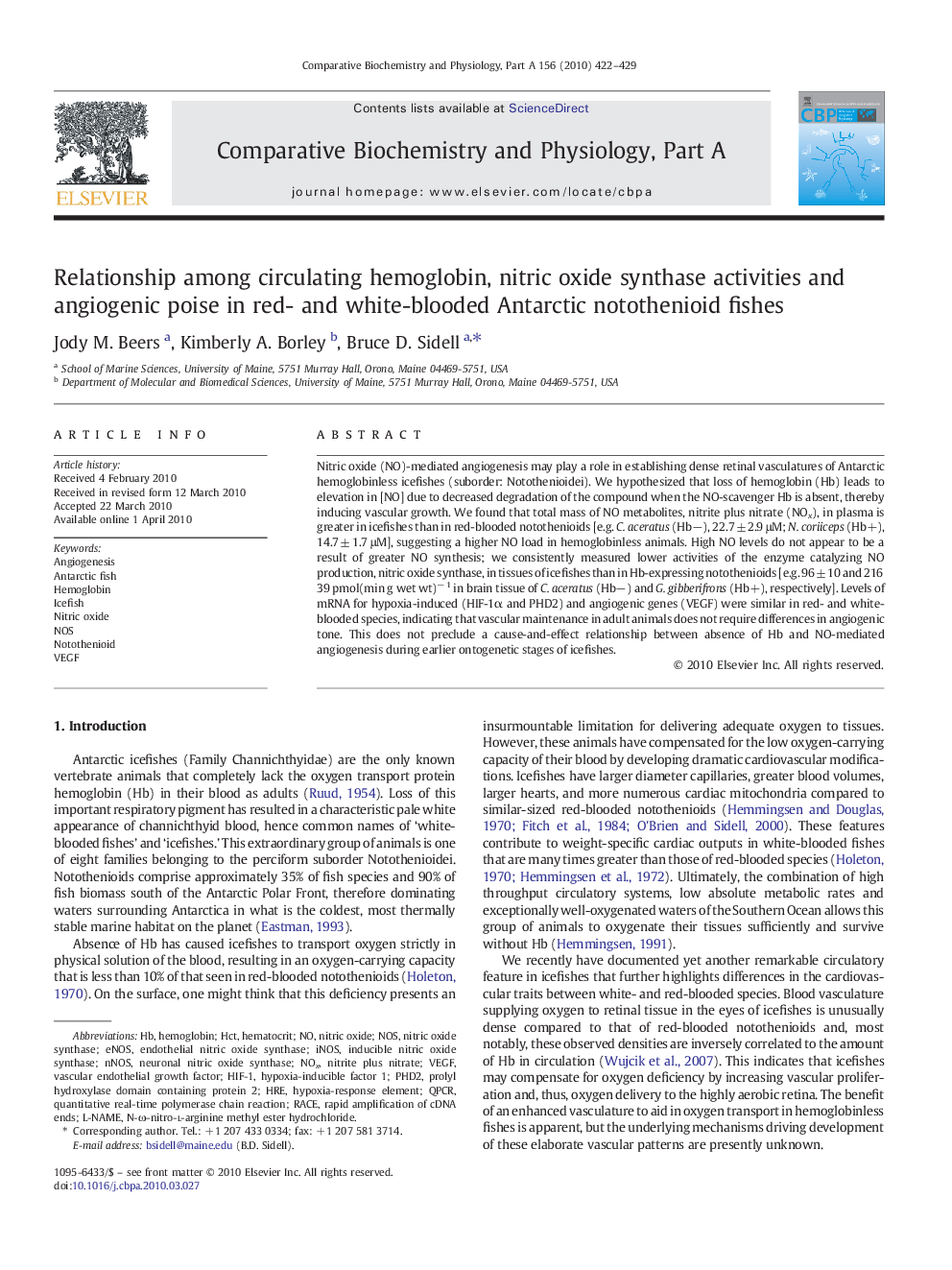| Article ID | Journal | Published Year | Pages | File Type |
|---|---|---|---|---|
| 1972956 | Comparative Biochemistry and Physiology Part A: Molecular & Integrative Physiology | 2010 | 8 Pages |
Abstract
Nitric oxide (NO)-mediated angiogenesis may play a role in establishing dense retinal vasculatures of Antarctic hemoglobinless icefishes (suborder: Notothenioidei). We hypothesized that loss of hemoglobin (Hb) leads to elevation in [NO] due to decreased degradation of the compound when the NO-scavenger Hb is absent, thereby inducing vascular growth. We found that total mass of NO metabolites, nitrite plus nitrate (NOx), in plasma is greater in icefishes than in red-blooded notothenioids [e.g. C. aceratus (Hbâ), 22.7 ± 2.9 μM; N. coriiceps (Hb+), 14.7 ± 1.7 μM], suggesting a higher NO load in hemoglobinless animals. High NO levels do not appear to be a result of greater NO synthesis; we consistently measured lower activities of the enzyme catalyzing NO production, nitric oxide synthase, in tissues of icefishes than in Hb-expressing notothenioids [e.g. 96 ± 10 and 216 ± 39 pmol(min g wet wt)â 1 in brain tissue of C. aceratus (Hbâ) and G. gibberifrons (Hb+), respectively]. Levels of mRNA for hypoxia-induced (HIF-1α and PHD2) and angiogenic genes (VEGF) were similar in red- and white-blooded species, indicating that vascular maintenance in adult animals does not require differences in angiogenic tone. This does not preclude a cause-and-effect relationship between absence of Hb and NO-mediated angiogenesis during earlier ontogenetic stages of icefishes.
Keywords
NOSHREnNOSeNOSiNOSHCTHIF-1PHD2NotothenioidqPCRIcefishl-NAMENOxAngiogenesisrapid amplification of cDNA endsinducible nitric oxide synthaseendothelial nitric oxide synthaseneuronal nitric oxide synthasehypoxia-inducible factor 1Hypoxia-response elementVascular endothelial growth factorVascular Endothelial Growth Factor (VEGF)Antarctic fishRaceNitrite Plus NitrateNitric oxidenitric oxide synthasehematocritHemoglobinquantitative real-time polymerase chain reaction
Related Topics
Life Sciences
Biochemistry, Genetics and Molecular Biology
Biochemistry
Authors
Jody M. Beers, Kimberly A. Borley, Bruce D. Sidell,
